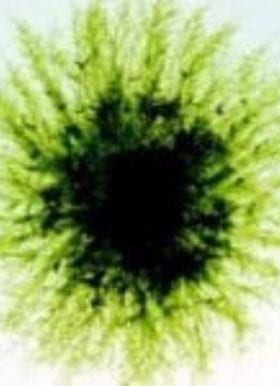
Ralph S. Quatrano
Professor, Department of Biology. Ralph is also Senior Partner in Exeteura, a new venture development company that provides expertise to build teams of entrepreneurs around a new technology/start-up.
- Phone: 3149357579
- Email: rsq@nospam.wustl.edu
I have been interested in the basic mechanisms controlling plant cell and tissue morphogenesis, and the gene regulatory networks that control desiccation tolerance in seeds.
Plant development is mainly driven by positional information integrated with the control of the direction, duration and distribution of divisions and elongation of cells. The establishment of an apical basal polarity followed by the generation of meristems leads to the morphogenesis of tissues and organs. In the model Fucus embryo system, we determined that the establishment of a stable polar axis occurs in the zygote, which directs the first cell division of the embryo and subsequent morphogenesis. The moss, Physcomitrella patens (see Fig 1), is more amenable to a functional analysis of the protein(s) that play a key role in these processes, due to its high efficiency of gene targeting and replacement by homologous recombination, as well as a fully sequenced and well annotated genome (https://cosmoss.org/).
Our recent studies on cellular morphogenesis have focused on defective kernel-1 (DEK1), a highly conserved trans-membrane protein found as a signal copy gene in all plants surveyed in the green plant lineage (Liang et al. 2013). Deletion of this gene in moss leads to the mis-orientation of cell divisions leading to the lack of a proper meristem and three-dimensional growth of the bud (Perroud et al. 2014). In the future, I hope others will attemot to identify proteins that complex with the cytoplasmic domain and/or the outer loop of DEK1, and their role in controlling the direction, duration and distribution of cell divisions.
Our second major area of research was centered on the gene networks that controls desiccation tolerance in seeds. The phytohormone abscisic acid (ABA) and the highly conserved regulatory protein ABI3 are both required for seeds to tolerate desiccation (Yotsui et al. 2013). Both ABA and ABI3 are found in moss, and as in seeds, are both required for desiccation tolerance in moss (Khandelwal et al. 2010). We recently identified a number of proteins by mass spectrometry that play a key protectant role in cells undergoing desiccation (Yotsui et al. 2016; U.S. Patent #9,243,261). Our working hypothesis is that gene regulatory pathways that include both ABA and ABI3 originally evolved for cellular protection from water deficits but independently have been used to provide desiccation tolerance in vegetative tissues of bryophytes and in angiosperm seeds.